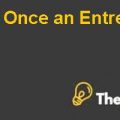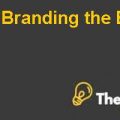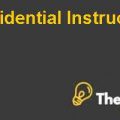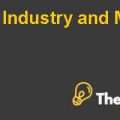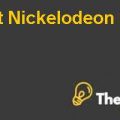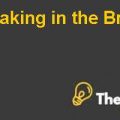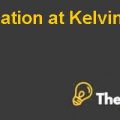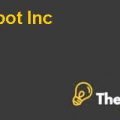
PASSING ON VS ABSORBING
Fortis Industries wanted to increase its price of raw material and for that, the company had two options, either to pass on its increased cost to its customers or absorb that incremental cost and produced at reduced margins while keeping the cost consultant.
Customer's Perspective: If Fortis passes the cost onto the customer then the customer would be unhappy to buy it and the customer switches to another company that would offer lower prices and if customers do not have the choice to switch to cheaper source then that customer would buy from Fortis even if he is not happy to buy it at an increased price. By increasing the cost and passing on to the customer, it would reduce the company’s sales as competitors in the market would avail this opportunity and attract those customers who wanted the product at a cheaper price. In this case, Fortis would suffer.
Sales force Perspective: On the other hand, if Fortis increases its prices than the sales force of the company would get hurt in terms of sales as they could not meet the target on the increased price.
Competitor’s Perspective: If Fortis increases its product prices than competitors would reduce the prices or offer the same prices that would increase their market share as customers would switch to those competitors. This would result in loss of market share of the Fortis Industries.
Absorbed Costing: If Fortis absorbs the cost and produce at lower margins than this would result in an increase in the market share and it also positively affects the sales force and they would be motivated to work and produce incremental result. By doing so, it would also give Fortis the benefit in terms of economies of scale as demand increases.
INSTITUTING VS NON-INSTITUTING PRICE FLEX
If Fortis provides the price-flex, than it would enable the company to sell its product at discount price and that discount would be given on the premium price about 7.5% and by doing so Fortis would get a competitive edge over its competitors.
The discount would help the Fortis not only to maintain its current market share, but it would also increase the market share and customer would also place the order in large quantity.
For the employees of the company, it would make them competitive as well as against the sales force available in the market. This would also reduce the target of the sales force and sales force of the Fortis would also gain bonuses on the additional sales.
It would threaten the competitors and allow the Fortis to be competing in the market.
PRICE INCREASE
The price that would be needed to increase is 7.5% where the company would get the profit if Fortis decides to increase its cost.
The table below shows the result of that price with profit over the increased cost.
Table 1:
|
Profit Drivers for Fortis |
||||||||||||||||||||||
|
Apex |
BBM |
HDM |
Custom |
Total |
||||||||||||||||||
| Sales (Mio. $) | 114 | 92 | 115 | 22 |
343 |
|||||||||||||||||
| Operating Profit Margin Ratio (Return on Sales, ROS) |
27% |
24% |
26% |
26% |
26% |
|||||||||||||||||
| Raw Material Costs in % of Variable Costs |
83% |
79% |
90% |
84% |
84% |
|||||||||||||||||
| Other Variable Costs in % Variable Costs |
17% |
21% |
10% |
16% |
16% |
|||||||||||||||||
| Variable Costs in % of Total Costs |
88% |
84% |
86% |
86% |
86% |
|||||||||||||||||
| Total Variable Costs in % of Sales |
64% |
64% |
64% |
64% |
64% |
|||||||||||||||||
|
Apex |
BBM |
HDM |
Custom |
Total |
||||||||||||||||||
| Total Costs in % of Sales |
73% |
76% |
74% |
74% |
74% |
|||||||||||||||||
| Total Costs (Mio. $) | 83 | 70 | 85 | 17 | 255 | |||||||||||||||||
| Fixed Costs in % of Total Costs |
12% |
16% |
14% |
14% |
14% |
|||||||||||||||||
| Fixed Costs in % of Sales |
9% |
12% |
10% |
10% |
10% |
|||||||||||||||||
| Fixed Costs (Mio. $) | 10 | 11 | 12 | 2 | 35 | |||||||||||||||||
| Variable Costs (Mio. $) | 73 | 59 | 73 | 14 | 220 | |||||||||||||||||
| Contribution Margin Ratio |
36% |
36% |
36% |
36% |
36% |
|||||||||||||||||
| Contribution Margin (Mio. $) | 41 | 33 | 41 | 8 | 123 | |||||||||||||||||
| Operating Profit (Mio. $) | 31 | 22 | 30 | 6 | 88 | |||||||||||||||||
| Break-even Sales (Mio. $) | 28 | 30 | 33 | 6 | 98 | |||||||||||||||||
| Safety Coefficient in % of Sales |
75% |
67% |
72% |
72% |
72% |
|||||||||||||||||
|
Profit Driver Change |
Price |
Volume |
Raw Material Costs |
Variable Costs |
Fixed Costs |
|||||||||||||||||
| Option 1: Business as usual (pass on steel price increase, no Price-Flex) |
7.5% |
70.0% |
6.8% |
5.7% |
0.0% |
|||||||||||||||||
| New Profit |
8% |
70% |
6.8% |
6% |
67 |
51 |
66 |
13 |
197 |
109 |
||||||||||||
| Change in Profit |
8% |
70% |
6.8% |
6% |
117% |
131% |
123% |
123% |
123% |
|||||||||||||
| New Profit Margin Ratio (Return on Sales, ROS) |
8% |
70% |
6.8% |
6% |
32% |
31% |
31% |
31% |
57% |
|||||||||||||
| Change in Profit Margin Ratio (Return on Sales, ROS) |
8% |
70% |
6.8% |
6% |
19% |
27% |
22% |
22% |
123% |
|||||||||||||
| New Contribution Margin Ratio |
8% |
70% |
6.8% |
6% |
37% |
37% |
37% |
37% |
37% |
|||||||||||||
| Change in Contribution Margin Ratio |
8% |
70% |
6.8% |
6% |
3% |
3% |
3% |
3% |
3% |
|||||||||||||
SIX PRICE SENARIOS
The table 2 is showing the three scenarios in which worst scenario shows the 95% change, base scenario shows..............
This is just a sample partial case solution. Please place the order on the website to order your own originally done case solution.
Describes the company, the price-FLEX policy discussed in (A) case. Rising prices for raw steel band canceled the steel industry. "Hide
by Rowland T. Moriarty Jr., Gordon Schwartz Source: Harvard Business School 1 pages. Publication Date: December 16, 2010. Prod. #: 511080-PDF-ENG

